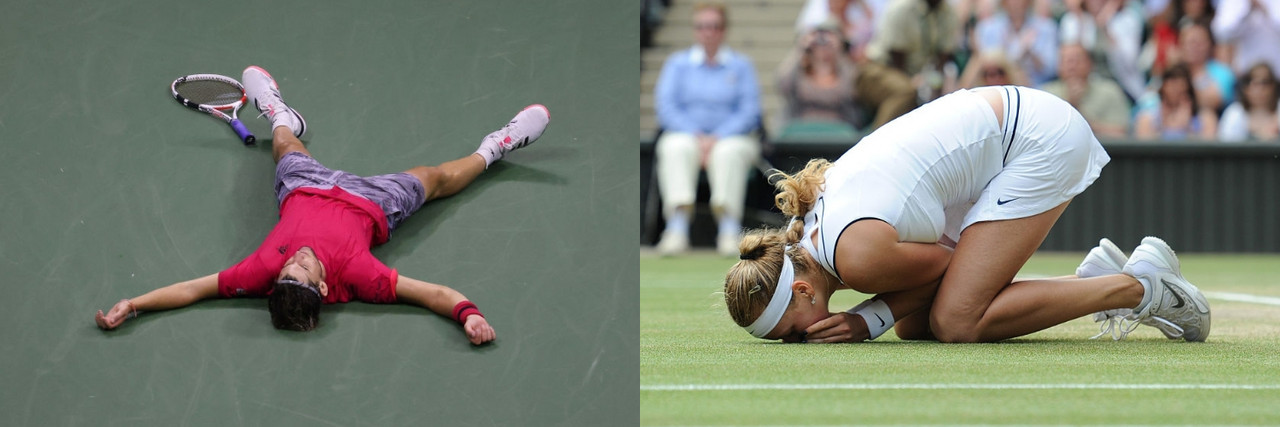It all began in the final of the Wimbledon Championships in 2011 when a 21-year-old Czech underdog fired an ace down the tee of the ad-side to convert championship point against the 2004 champion and take home the ladies’ singles title.
That person is none other than Petra Kvitova. The Czech’s achievement was a notable one as she became the first player male or female born in the 1990s to win a Grand Slam title across all disciplines.
Kvitova would remain the only player born in the 1990s with a Grand Slam singles title to her name for close to five years, establishing herself as one of the world’s elite, picking up her second Wimbledon crown in 2014 after demolishing Eugenie Bouchard in the final, and recording top-10 finishes for five seasons in a row beginning 2011.
It was at the French Open in 2016, a month shy of the fifth year anniversary of her first Wimbledon triumph, where Kvitova was made to share that feat when Garbiñe Muguruza won the women’s singles event in Paris.
A further eight players born in the 1990s or later would go on to achieve the same feat as Kvitova and Muguruza, up until the 2020 Australian Open. There, Sofia Kenin claimed the women’s singles title at the after topping Muguruza in the final.
Furthermore, Bianca Andreescu’s US Open title win last year saw the Canadian become the first player born in the 2000s to be crowned Grand Slam champion. However, one outstanding observation is that they are all are women.
As a matter of fact, it is true, no male player born in the 1990s has ever won a Grand Slam singles title, the best showing being just four runner-up finishes by Dominic Thiem (born 1993) and Daniil Medvedev (born 1996) combined, the last of those coming at the Australian Open earlier this year.
All of that finally changed in the fortnight of the recent US Open, 110 months removed from Kvitova’s first Wimbledon victory.
1. Petra Kvitova
Being one of the form players in 2011, Kvitova entered the grass court swing that year with three title wins for the season under her belt. She played the grass-court warm-up event in Eastbourne, and made the final where she was handed the first runner-up finish of her career, by Frenchwoman Marion Bartoli.
That, however, did not halt the Czech's fiery momentum as she safely progressed to her third career Grand Slam quarterfinal at Wimbledon a week later, her second in a row here.
There, she was then made to work hard, dropping a set to each of Tsvetana Pironkova and fourth seed Victoria Azarenka in the quarterfinals and semifinals, respectively.
Facing fifth seed and 2004 winner Maria Sharapova in the final, however, Kvitova showed nerves of steel as she delivered a convincing performance to claim her first Grand Slam title, overpowering the Russian 6-3, 6-4.
Trivia: The victory meant that for just the third time since 1999, a player other than the Williams sisters won the Wimbledon ladies’ singles title. Kvitova also became the first Czech to win a Grand Slam singles title since Jana Novotna won her only Grand Slam crown here in 1998. However, something many did not realize was that she became the first player of either gender born in the 1990s to lift a Grand Slam title.
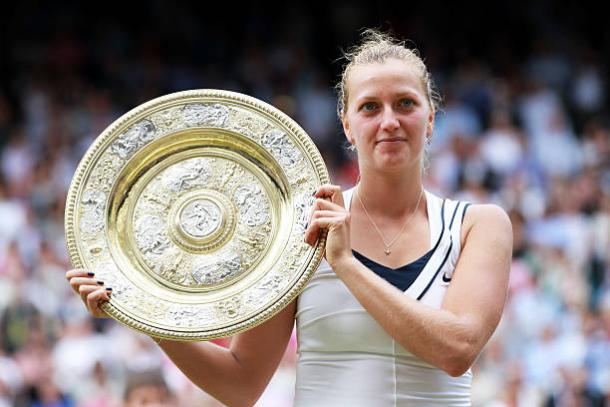
A slow start to 2014, saw Kvitova go 18-10 for the season leading up to Wimbledon. She also had to concede a walkover in her quarterfinal match at Eastbourne the week before due to injury.
This meant that Kvitova had not many expectations at the third Grand Slam event of the year. However, she faced no problems winning her first two matches, doing so without the loss of a set.
That set her up in a blockbuster third-round clash against former champion and 30th seed Venus Williams. It was here the Czech lost her first set of the tournament but prevailed in a close yet high-quality encounter 5-7, 7-6(2), 7-5.
That match was arguably Kvitova’s biggest test en route to the final, even some had argued it was worthy of a final. She would go on to win her next three rounds in straight sets to set up a meeting with 13th seed and rising star Bouchard in the title match.
Bouchard, then a rising 20-year-old, was widely expected to challenge Kvitova, and even upset the 2011 champion, has made the semifinals of the first two Slams that year, falling to the eventual champion in both occasions.
Kvitova, however, delivered a masterclass as she swatted aside the Canadian with 6-3, 6-0. The win sent Kvitova back into the top 5 for the first time in almost two years.
Trivia: Kvitova’s dominant win over Bouchard in that final, which took just 55 minutes to complete, is one of the fastest Wimbledon finals in recent memory. Kvitova added a second Wimbledon title, second at the Grand Slams overall, to her first one from 2011, becoming the first player born in the 1990s to win multiple Grand Slam singles titles.
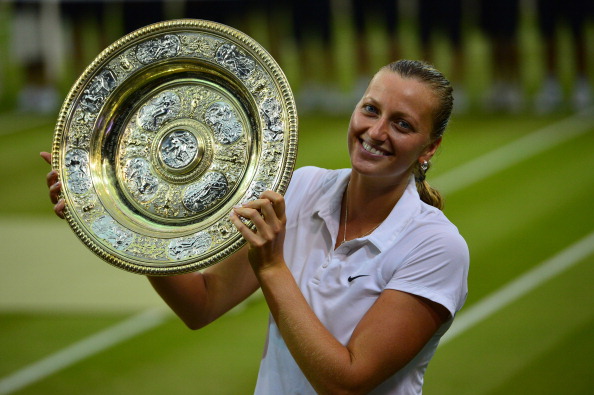
2. Garbiñe Muguruza
2016 and 2017 saw Muguruza hit the pinnacle of tennis achievements. She, however, experienced rather slow progress in the first half of both seasons. In 2016, she racked in a mere 11 wins across nine tournaments in that period.
The Spaniard’s final preparation for the French Open that year, at the Italian Open, was a sign of things to come. She made the last four to post her best result in more than six months.
She carried the momentum into the year’s second Grand Slam where she sailed into the last eight here for the third year in a row, this time, dropping only one set along the way.
There, she moved past first-time Grand Slam quarterfinalist Shelby Rogers and then saw off former runner-up Samantha Stosur to earn a rematch of the 2015 Wimbledon final, against Serena Williams. There, Muguruza produced a stunning win over the American, winning 7-5, 6-4.
Trivia: By virtue of that result, Muguruza handed Wiliams back-to-back defeats in Grand Slam finals for the first time in the latter’s career. She also became the second player born in the 1990s to win a Grand Slam singles title, nearly five years after Kvitova became the first one to achieve that feat.
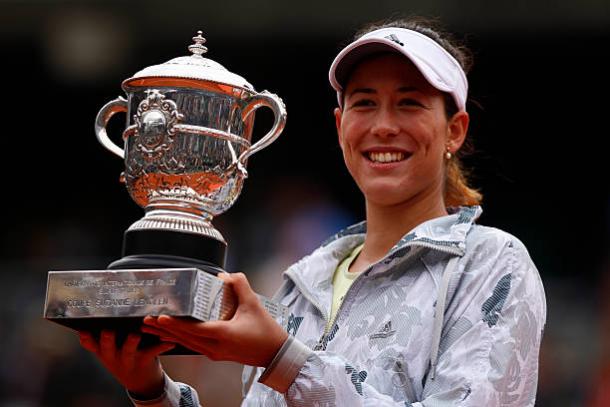
Muguruza struggled for most of the beginning of 2017, making the quarterfinal round or better at just four events. As a first-time Grand Slam defending champion, in Paris, she was not able to make the last eight after she was sent packing by Kristina Mladenovic in the fourth round.
As a result, her ranking plummeted 10 places to 15th. The Spaniard, amazingly, recovered from this fall soon on grass. This began with a semifinal showing in Birmingham.
An early loss in Eastbourne next did not seem to bother her as she would go on to record a semifinal appearance at the Grand Slams for the third year in a row, at Wimbledon, next.
There, she defeated a pair of top-10 players in top-ranked Angelique Kerber and seventh seed Svetlana Kuznetsova en route. After seeing off first-time Grand Slam semifinalist Magdalena Rybarikova, Muguruza took down Venus Williams in the final in straight sets for her second Grand Slam title.
The title propelled Muguruza back into the top 5, and the Spaniard would go on to achieve the world number one ranking for the first time in her career later that summer.
Trivia: Muguruza’s Wimbledon title also did not just see her record a win over each of the Williams sisters in Grand Slam finals, but she did something Kvitova did not manage to do, becoming the first player born in the 1990s to win the singles title at two different Grand Slam events.
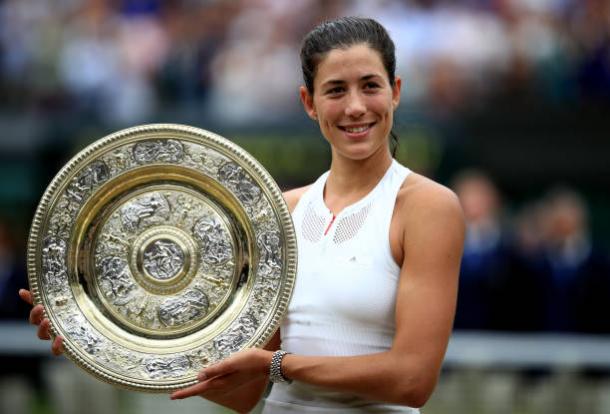
3. Jelena Ostapenko
2017 marked the first time since 2014 where four different names took home the title at the Grand Slams. The year began with Serena Williams’ record-breaking 23rd Grand Slam title, at the Australian Open.
Prior to Muguruza’s Wimbledon triumph that year, the season’s second Grand Slam event saw a surprise winner emerge in Latvia’s Jelena Ostapenko.
Ostapenko had emerged from the section of the draw which saw the exits of top seed Kerber, and former semifinalist Kvitova. The Latvian saw off former runner-up Stosur in the last 16 and then upset Caroline Wozniacki in the last eight.
Ostapenko’s victory over Bacsinszky in the last four, which took place on their birthdays, as well as Simona Halep’s defeat of Karolina Pliskova in the other semifinal, ensured a third player born in the 1990s will be named Grand Slam champion.
Despite being the heavy underdog in the final, even going down a set and 0-3, the powerful Latvian would regroup to score the upset win over Halep, the 2014 runner-up, 4-6, 6-4, 6-3, with a backhand return winner to convert championship point.
Trivia: Ostapenko did not just become the third player born in the 1990s to lift a Grand Slam singles title, but her French Open win was also the first title of her career, recording a feat last achieved by Gustavo Kuerten when he won the 1997 French Open in the final which, coincidentally, took place on Ostapenko’s birthday.
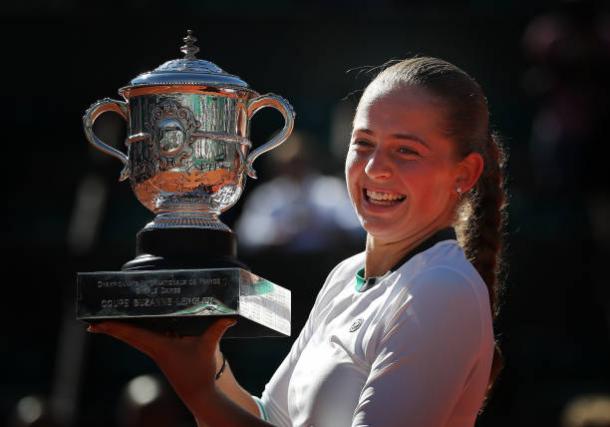
4. Sloane Stephens
To cap off 2017 in Grand Slam tennis, the US Open was a memorable one for the home fans. Firstly, each of the four quarterfinal matches in the Big Apple that year featured an American player.
All four would emerge victorious to complete an all-American semifinal line-up here for the first time since 1981. They were Venus Williams, Coco Vandeweghe, Sloane Stephens, and Madison Keys. That line-up also meant that for the first time since the 2013 French Open, there was no first-time Grand Slam semifinalist.
The championship round would see Stephens and Keys go head-to-head for their first Grand Slam title, and also the bragging rights of the fourth player born in the 1990s to lift a Grand Slam singles title.
Stephens, who was one of the form players, having made back-to-back semifinal appearances in Toronto and Cincinnati prior, maintained her mastery over her younger compatriot, dropping just three games to produce a repeat scoreline of the 2014 Wimbledon final, to claim the title.
Trivia: Stephens became the second unseeded player to win the US Open women’s singles title after Kim Clijsters in 2009, and the first American other than the Williams sisters to do so since Lindsay Davenport in 1998.
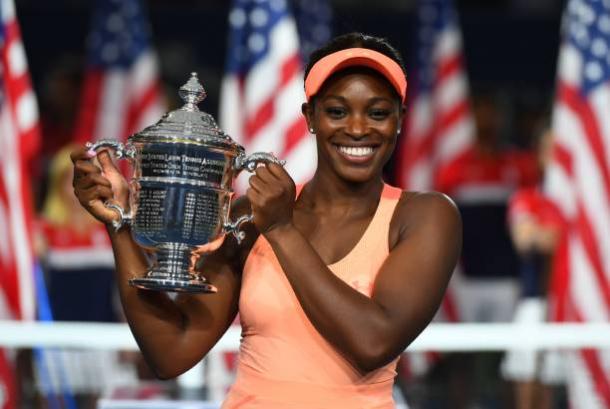
5. Caroline Wozniacki
The first two Grand Slam winners of the 2018 season share a common trait. Both have been ranked number one in the careers but have yet to claim a Grand Slam title.
At the Australian Open that year, reigning WTA Finals champion Wozniacki, who enjoyed a resurgent 2017, suffered a scare in the first week of the tournament, being forced to come back from a four-game deficit in the decider, saving two match points in the process, before routing Croat Jana Fett, in the second round.
This victory resembled that of Kerber’s first-round win here in 2016 against Misaki Doi where the German had to fend off a match point in the second-set tiebreak before going on to win the match and, eventually, her maiden Grand Slam title.
Like Kerber, that win also produced the same outcome for Wozniacki as the Dane went on to make her first semifinal in Melbourne since 2011, where she saw off first-time Grand Slam semifinalist Elise Mertens.
In the final, her third at the Grand Slams, she prevailed in a close three-setter against top seed Halep, who was also in her third Grand Slam final, 7-6(2), 3-6, 6-4 for her maiden Grand Slam crown, becoming the fifth player born in the 1990s to capture a Grand Slam singles title.
Trivia: The result not only returned Wozniacki atop the rankings for the first time in exactly six years, but she also became the player with the longest gap between stints as world number one. Moreover, for the first time in history, each of the past four Grand Slam events have now been won by a player born in the 1990s, all of them women.
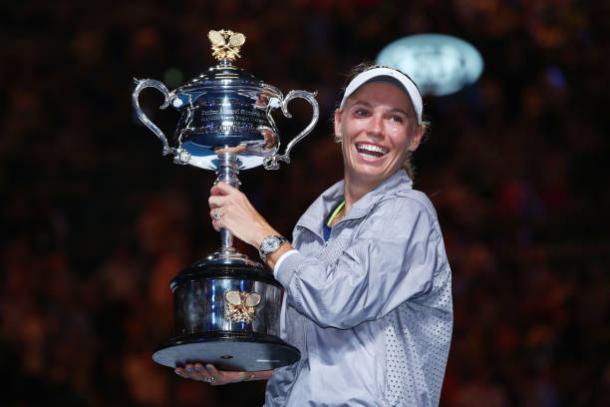
6. Simona Halep
Halep thus was made to wait for one more Grand Slam tournament to get the chance to finally secure the elusive maiden Grand Slam title. That wait ended at the second Grand Slam event of 2018.
As the top seed in Paris, she sailed through the first week unscathed, dropping just one set, in her opener against Alison Riske. Moving into the second week, she saw off Mertens easily to book a place in the quarterfinals.
Thenceforth, the Romanian scored wins over a trio of Grand Slam winners in Kerber, Muguruza and Stephens, the latter two being reigning champions, to become the sixth player born in the 1990s to win a Grand Slam singles title.
Trivia: The win made Halep the first Romanian to win a Grand Slam singles title since Virginia Ruzici, now in Halep’s team, triumphed here exactly 40 years prior. In the final against Stephens, Halep, having lost from a set and a break up against Ostapenko in last year’s final, sculpted a plot twist, as she came back from a set and a break down to deny the American a second Grand Slam title.
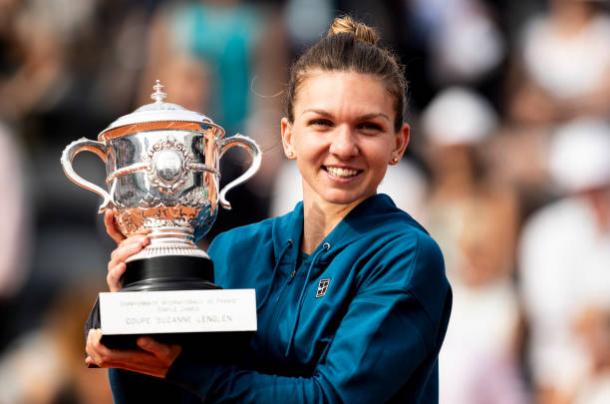
Halep would go on to reenact Muguruza’s first two Grand Slam title achievements, winning the first at the French Open and the second at Wimbledon the year after.
2019 marked the first time since 2014 where Halep has managed to make it to the last four of Wimbledon. There, she beat first-time Grand Slam semifinalist Elina Svitolina, and then the final, Serena Williams, losing no more than four games in each match.
That would turn out to be Halep’s sole title that year. The Romanian, even more remarkable, had lost only one set throughout the tournament, in her second-round tussle against compatriot Mihaela Buzarnescu which she won 6-3, 4-6, 6-2.
Trivia: Halep’s Wimbledon title meant that for the second time in history, the winner of the past four Grand Slam events are players born in the 1990s. To date, the last female Grand Slam singles champion born before the 1990s is Kerber, who won here the year before, and, like Halep, also defeated Serena Williams in the final in straight sets.
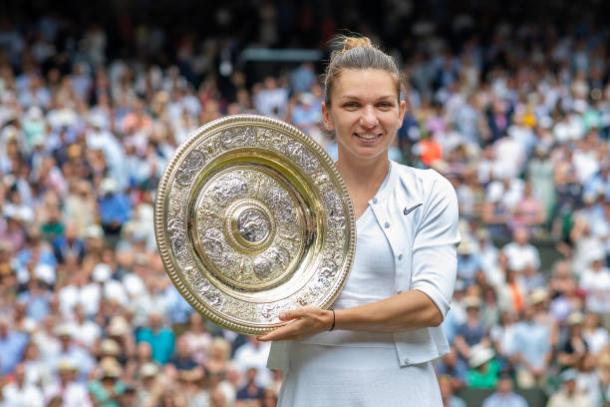
7. Naomi Osaka
Naomi Osaka, in 2018, had been quietly climbing up the rankings. She had won the Indian Wells title that year, which propelled into the top 30 rankings for the first time in her career.
It would be a quiet few months for her after that, making the third rounds of the French Open and Wimbledon, as well as a semifinal run in Nottingham.
In New York City, 20th seed Osaka breezed through the first week of the US Open, dropping just seven games in three matches, before surrendering her only set-loss all tournament against 26th seed Aryna Sabalenka in the last 16.
It was then back to business for the Japanese woman once more as she dropped no more than four games per set in her remaining three matches, which saw her beat 17th seed, Serena Williams, in the final.
Trivia: With the win, Osaka not only became the seventh player born in the 1990s to seal a Grand Slam singles title, but she was also the first such Asian to do so, and the first Asian overall since Li Na triumphed at the Australian Open in 2014.
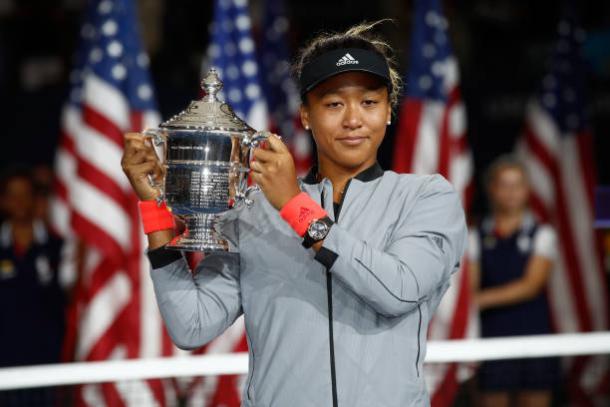
Osaka would go on to become the first player born in the 1990s to win the title in back-to-back Grand Slam tournaments held, equalizing Kvitova and Muguruza’s tallies of two Grand Slam titles each, doing so at the Australian Open the following year.
Osaka’s path to the title this time around was more challenging as she was taken to a decider in all but one match, coming back from a set down against 28th seed Hsieh Su-Wei and 13th seed Anastasija Sevastova in the third and fourth rounds, respectively.
She then dropped the second set in the last four against seventh seed Pliskova, and in the final, a shootout for the top ranking, another Czech in eighth seed Kvitova, the latter handing Osaka her second Grand Slam crown.
Trivia: Osaka’s Melbourne crown in 2019 made her the first-ever player of Asian descent to be ranked world number one. Furthermore, Amanda Anisimova became the first player of either gender born in the new millennium to reach the second week of a Grand Slam tournament, doing so with her run to the fourth round where she was dispatched by Kvitova.
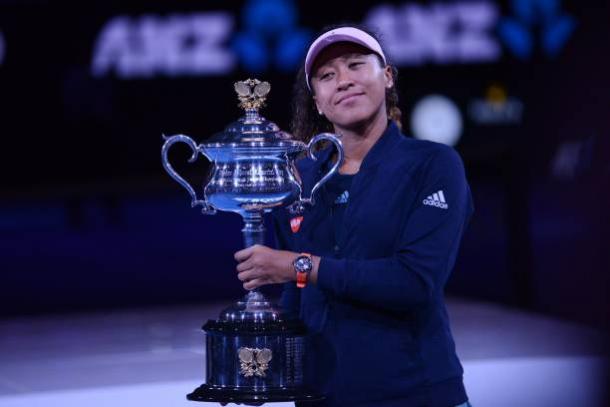
The Japanese player would continue her hard court mastery at the Grand Slams, taking home her third Grand Slam title at next year’s US Open, and becoming the first player born in the 1990s to win three Grand Slam singles titles.
Despite having entered the tournament on an injury cloud, having been forced to concede a walkover to Azarenka at the Western & Southern Open final the week before with a hamstring issue, she safely marched through the first week.
In the last 16, she went up against 14th seed Anett Kontaveit, and Osaka saw off her Estonian opponent for the second time in almost two weeks to book a quarterfinal berth.
The Japanese player then maintained her spotless record in quarterfinal or better rounds at the Grand Slams as she moved past Americans Shelby Rogers and Jennifer Brady to enter her third Grand Slam final.
There, she prevailed over Azarenka in a three-setter, 1-6, 6-3, 6-3, for her second title here, and third Grand Slam singles title overall.
Trivia: This marked the first time at the US Open, since 1994, where the winner had to come back from a set down in the women’s singles final to win the title. It was also the third time since the Western & Southern Open became a Premier 5 event in 2009 where its finalists would go on to reach the US Open final, and the results in both matches reversed. The first two had come in 2013 and 2016, where Serena Williams and Kerber won the latter event, defeating Azarenka and Pliskova, respectively.

8. Ashleigh Barty
2019 was the stellar season of Ashleigh Barty's career. She started the year strong on home soil down under, where she finished runner-up in Sydney, and then made her first Grand Slam quarterfinal at the Australian Open, falling on both occasions to Kvitova.
The Aussie showed no signs of slowing down after that, sailing to her maiden Premier Mandatory title in Miami, and then on clay by making the last eight in Madrid.
Entering the French Open seeded eighth, her first top-10 seeding at the Grand Slams, she emerged out of a quarter of the draw which had witnessed the exits of Osaka and Serena Williams, after defeating Sofia Kenin in the last 16.
She then saw off Kenin’s compatriots in 14th-seeded Keys and Anisimova, in the quarterfinals and semifinals, respectively, to reach the final.
The departures of Halep and Stephens in the quarterfinal round prior also meant that there will be a birth of a new Grand Slam singles champion born in the 1990s.
In a battle of first-time Grand Slam finalists against Marketa Vondrousova, Barty emerged the winner with a loss of just four games as she saw off the Czech 6-1, 6-3 to win her maiden Grand Slam title.
Trivia: Barty’s French Open win made her the first Australian to win the title here since Margaret Court in 1973. It was also the fourth consecutive French Open where a player born after the 1980s lifted the singles title, the best streak at any of the four Grand Slam events, until Osaka’s 2020 US Open victory. Anisimova also continued her trailblazing record at the Grand Slams. The American’s semifinal result in Paris, where she lost to Barty, made her the first player male or female born in the 2000s to reach a Grand Slam quarterfinal, and semifinal.
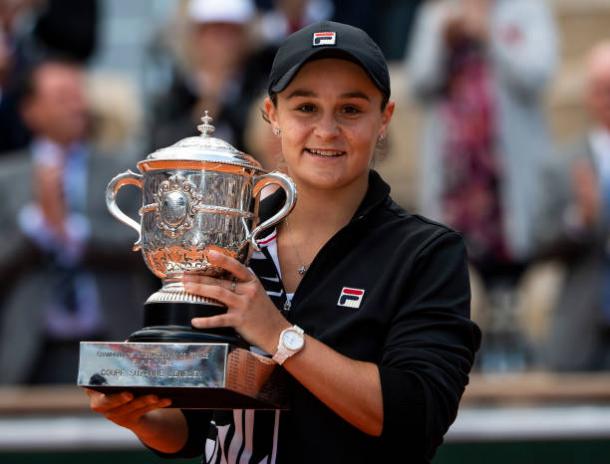
Honorable mention: Bianca Andreescu
To finish Grand Slam tennis of the 2010s, the US Open saw the emergence of the first Grand Slam tournament winner born in the 2000s.
Andreescu, born in the year 2000, like what Osaka had done the year before, claimed the Indian Wells title in early 2019. She then won her second title of the year before the US Open, on home soil at the Rogers Cup, after Serena Williams was forced to retire early into the final with a back issue.
Despite an unexpected conclusion to her Toronto title run, the Canadian showed no signs of stopping as she entered the second week of a Grand Slam event for the first time in her career at the US Open, doing so without the loss of a set.
Seeded 15th at the Big Apple that year, she would lose her first set of the tournament in the fourth round against American Taylor Townsend. She was then taken the distance by 25th seed Mertens in the quarterfinals to secure a spot in her first Grand Slam semifinal.
There, Andreescu defeated 13th seed Belinda Bencic 7-6(3), 7-5, a stand-off between two first-time Grand Slam semifinalists. In the final, a rematch of the Toronto final, she beat eighth seed Serena Williams 6-3, 7-5, to secure her maiden Grand Slam title.
The Canadian, however, did not have things her way in those matches, having had to come back from a 2-5 down in the second set against Bencic, and fend off a comeback from Williams despite having led 6-3, 5-1, a game away from the title.
Trivia: Andreescu’s victorious fortnight in New York City did not only put her as the first player of either gender born in the 2000s to win a Grand Slam tournament title but also the first Canadian to lift a Grand Slam singles title, and the result sent her into the top 5 for the first time in her career, the first Canadian to do so since Bouchard in 2014. 2019 also became the first season in history where no woman born before the 1990s won a Grand Slam singles title.
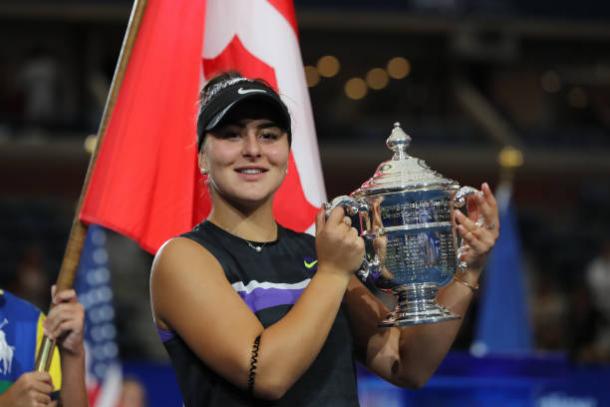
9. Sofia Kenin
The first Grand Slam tournament of the new decade would produce another new champion, also born in the 1990s. America's Kenin started 2020 slowly, winning just one match in each of Brisbane and Adelaide, the latter saw her lost to compatriot Danielle Collins, managing just four games under her belt.
Entering the first Grand Slam of the season well under the radar, 14th seed Kenin would safely sail into the second week without the loss of a set, which included wins over former quarterfinalist Zhang Shuai, and rising star and compatriot Coco Gauff.
In the last eight, in what turned out to be a battle of first-time Grand Slam quarterfinalists, the American saw off Tunisia’s Ons Jabeur to set up a semifinal clash with world number one Barty. The American upset the top player in straight sets, in front of a home crowd, to make the final in Melbourne.
There, she went up against a two-time Grand Slam winner in Muguruza. The unseeded Spaniard, clearly the more experienced of the pair, would take the first set 6-4. Kenin, however, enacted a comeback as she gritted out a 4-6, 6-2, 6-2 win.
Trivia: Kenin’s Melbourne triumph marked the first time an American not named Serena Williams lifted the title here since Jennifer Capriati in 2002. Moreover, Kenin’s Hobart title in 2019 meant that since the turn of the century, four players who won the title in Tasmania went on to become Grand Slam champions, the others being Clijsters (2000), Kvitova (2009) and Muguruza (2014).
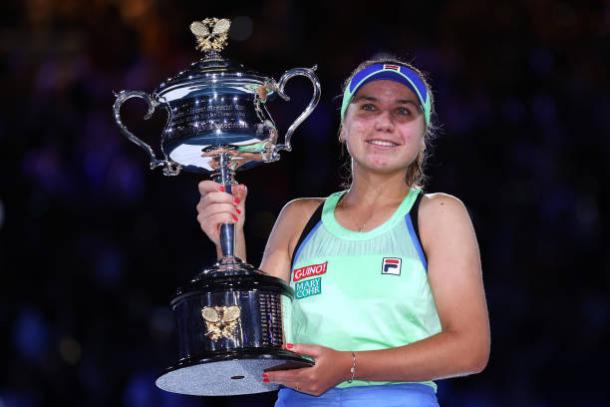
10. Dominic Thiem
Prior to 2020, Thiem’s best showings on a hard court had been a quarterfinal run at the US Open in 2018, and his first Masters 1000 crown, Indian Wells, in 2019, where he beat Roger Federer in the final.
Thiem experienced his first breakthrough on the surface at the Grand Slam level earlier this year at the Australian Open, where he sealed a third appearance in a Grand Slam final, taking Novak Djokovic all the way to a decider but finished runner-up to the Serb.
Entering the US Open, the Austrian was coming off an upset loss in his opening match at the Western & Southern Open, in the hands of eventual quarterfinalist Filip Krajinovic.
Having lost in the opening round 12 months prior, the Austrian faced no problems winning his first two matches at the Big Apple this time around, doing so without the loss of a set, against Jaume Munar and Sumit Nagal.
Facing a former winner in 31st seed Marin Cilic next, the Austrian was taken to four sets but secured the win over the Croat nevertheless, before seeing off 15th Felix Auger-Aliassime in the last 16.
The exit of top seed and top-ranked Djokovic in the last 16 meant that for the first time in history, all male singles quarterfinalists in a Grand Slam tournament are born in the 1990s hence a new Grand Slam champion will be crowned.
In his next two matches, Thiem dispatched 21st seed Alex de Minaur and then third seed Medvedev, both in straight sets, to record back-to-back Grand Slam finals for the first time in his career.
Facing off against fifth seed Alexander Zverev, who was in his maiden Grand Slam final, for the title, Thiem took the scenic route, firstly, going down two sets and a break against the German.
The Austrian, however, was able to steer the ship to the win in the end, even surviving a topsy-turvy deciding tiebreak set which saw six breaks of serve, to win 2-6, 4-6, 6-4, 6-3, 7-6(6), and become the first male player born in the 1990s to win a Grand Slam singles title.
Trivia: With his landmark title win in New York City, Thiem also became the first person in the Open Era to come back and win a US Open final from two sets down. The last time this ever happened here was 1949. He also became the newest male Grand Slam singles winner since Cilic won the title here six years ago.

Breakdown of winners by year of birth
| Year of birth | Champions (number of titles) |
| 1990 | Kvitova (2), Wozniacki (1) |
| 1991 | Halep (2) |
| 1992 | |
| 1993 | Muguruza (2), Stephens (1), Thiem (1) |
| 1994 | |
| 1995 | |
| 1996 | Barty (1) |
| 1997 | Osaka (3), Ostapenko (1) |
| 1998 | Kenin (1) |
| 1999 | |
| *2000 | Andreescu (1) |










































